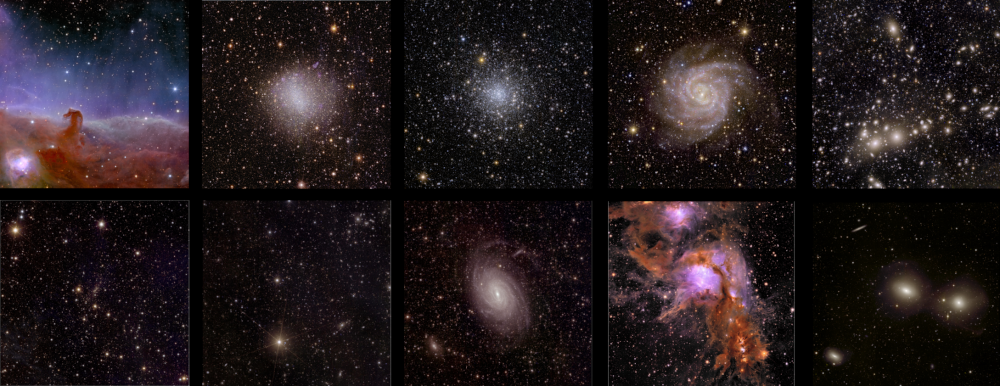Euclid: first scientific results and sparkling new images!
The Euclid mission today publishes its first scientific results, accompanied by new, never-before-seen images of the Universe. A demonstration of the remarkable achievements of this European satellite!

These new images are part of the first observations, the EROs (for Early Release Observations). To accompany them, 10 scientific papers are also being published today, detailing the mission’s first scientific data. A milestone for Euclid.
Incredibly diverse scientific images and discoveries
In terms of objects or distances observed, these discoveries are incredibly varied. And all in just 24 hours of observation!
For these first observations, a total of 17 astronomical objects were targeted: nearby clouds of gas and dust, but also distant clusters of galaxies. Euclid’s view is both highly detailed and extremely wide. This exceptional versatility enables it to capture a wide range of objects in the same image, from the least luminous to the brightest, from the most distant to the closest, from the most massive galaxy clusters to the smallest planets.
Enough to unlock the galaxy’s darkest secrets…
Results beyond expectations
The images obtained by Euclid are at least four times sharper than those obtained by terrestrial telescopes. By combining visible and infrared light, Euclid can observe vast expanses of sky with unrivalled depth.
An essential skill for fulfilling its mission: to understand how our Universe formed and evolved over the course of cosmic history, as well as the most mysterious of its fundamental components: dark energy and matter.
While these images amaze us with their beauty and precision, they do much more than that: they reveal new physical properties of our Universe. These scientific secrets are detailed in a number of related articles published by the Euclid consortium, together with five key reference documents on the Euclid mission.
What do these first discoveries show?
The first discoveries highlight Euclid’s capability in several major areas:
- the search for free-roaming planets in star-forming regions, with masses four times that of Jupiter;
- studying the outer regions of star clusters in unprecedented detail;
- the mapping of different stellar populations to study how galaxies have evolved over time;
- detect individual star clusters in distant galaxy groups and clusters;
- identifying a rich harvest of new dwarf galaxies;
- observing the light of stars torn from their parent galaxies…
… and much, much more!
Euclid produced this first catalog in a single day, revealing over 11 million objects in visible light and a further 5 million in infrared light.
Further Resources
- Press Releases :
- Euclid : premiers résultats scientifiques et nouvelles images étincelantes ! (CNES)
- La mission Euclid livre de nouvelles images pour accompagner ses premiers résultats scientifiques (CNRS)
- First Early Release Observation science and reference paper release (Euclid Consortium)
- ESA’s Euclid celebrates first science with sparkling cosmic views (ESA)
- New Images From Euclid Mission Reveal Wide View of the Dark Universe (NASA JPL)
IRAP Contact
- Alain Blanchard, alain.blanchard@irap.omp.eu






